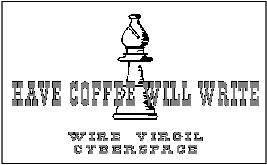THE ZEN OF CREATIVITY…
The Zen of Creativity: Cultivating Your Artistic Life
by
John Daido Loori
In the Japanese art of the period we see the emergence of wabi, a sense of loneliness or solitude; Sabi, the suchness of ordinary objects, the basic, unmistakable uniquesness of a thing in and of itself; Aware, the feeling of nostalgia, a longing for the past; and yugen, mystery, the hidden, ineffable dimension of reality-qualities that have become synonymous with the Zen aesthetic. p. 5
The most interesting aspect of the artless arts of Zen-the tea ceremony, bamboo flute, landscape gardening, Noh drama, ceramic arts and archery-according to D.T. Suzuki, is that they don”t exist for the sole purpose of creating a work of art, but they are rather a method for opening the creative process. They comprise means of training the mind and of living our lives. p. 5
Don”t try to make a photograph, but let your intuition indicate the right moment to release the shutter. If, after you”ve made an exposure, you feel a sense of completion, bow and let go of the subject and your connection to it. p. 17
“When the spirit does not work with the hand there is no art.” Leonardo Da Vinci. p. 29
“No muse appears when invoked, dire need will not rouse her pity.” May Sarton. p. 86
“If you aim to dispense with method, learn method… if you aim at facility, word hard. If you aim for simplicity, master complexity.” Wang Anjie, author and compiler of the Mustard Seed Garden Manual. p. 113
A particularly challenging barrier can often be the attachment to our creations. If we are over invested in our art, we lose our sense of judgment. When selecting the work we would like to show an audience, we may be tempted to leave in a piece with no merit other than the pains we went through to create it. p. 118
… working with barriers can”t be rushed. We have to trust our feelings, and the natural timing of the body, even as we work toward that release through engaging the creative process…
Art koans are a unique way of addressing our barriers, making them both visible and workable through the creative process. In using koans, our intuitive aspect of consciousness must be engaged in order to reach any depth of insight into the problem we are facing. p. 124
The answer to a koan is not a parcel of information. Rather, it”s one”s own intimate and direct experience of the universe and its infinite facets. In frustrating the intellect, koans dismantle the customary way of solving problems and open up new dimensions of human consciousness. p. 124
We hear this simplicity in the chanting during liturgy. Chants are monochromatic and follow the deep drone of a wooden drum. They tend to ground us, rather than lift us to higher states of consciousness, the way that Gregorian chants might do. The chanting has the sound of a heart beat or the pounding of the surf. p. 135
“Everything should be as simple as it is, but not simpler.” Albert Einstein. p. 141
Chado is the way of tea. p. 148
To be simple means to make a choice about what”s important and to let go of all the rest. When we are able to do this, our vision expands, our heads clear and we can better see the details of our lives in all their incredible wonder and beauty. p. 154
Basho”s Haiku, p. 217
The ancient pond
a frog leaps in
water-sound
To write haiku, to become this intimate with the moment, the poet must completely disengage, if only for a moment, all of her interpretive facilities. The mind must become one with the world, a detail of the world – the splash, a peach blossom, a neon sign flashing along the highway, the sound of a mountain stream. The poet”s craft has to slip through the intellectual filters and instinctively record the image that has been perceived. As Basho said, “In writing, do not let a hair”s breadth separate you from the subject. Speak your mind directly; go to it without wandering thought.” For an instant, the artist opens to the ineffable truth of Zen. With the self out of the way, the world advances a step.
Basho”s haiku expresses the ideal that haiku poets have since striven to attain: to share with the audience, through the medium of the written or spoken word, the essential nature of the subject at hand. In other words, to close the gap between [sic] the artist, the subject and the audience perceiving the piece of art. p. 219
“Life is nothing more than searching for and acting out the myriad possibilities of meaning with which the self and the world are pregnant.” Dogen. p. 226
Practice, whether Zen or art, is a way of making the invisible visible. We are all complete, lacking absolutely nothing. This was the first teaching of the Buddha. It remains the first teaching of Zen. Some may realize the truth of this perfection, some may not, but nevertheless, we are all perfect. Practice is a way of making that fact visible. p. 231






